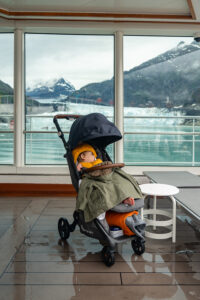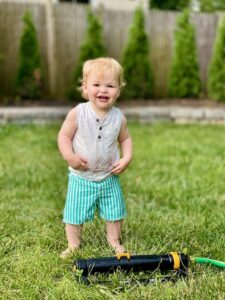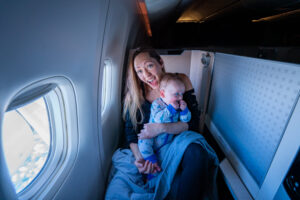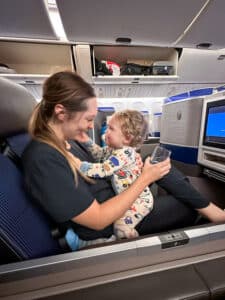Hiking with a Baby – How to Make it Easy and FUN!
As soon as my baby could hold his head up, I knew I wanted to start hiking with him. It was something I loved before he was born, and I wanted to inspire a love of the outdoors in him.
Plus, it keeps me sane!
Having led over 100 women on their first backpacking trips in Alaska, Patagonia, and more, I already knew how to hike successfully, but how would it be different with a baby? Several hikes and months later, here’s everything to know about hiking with a baby:
1. Let Yourself Heal First
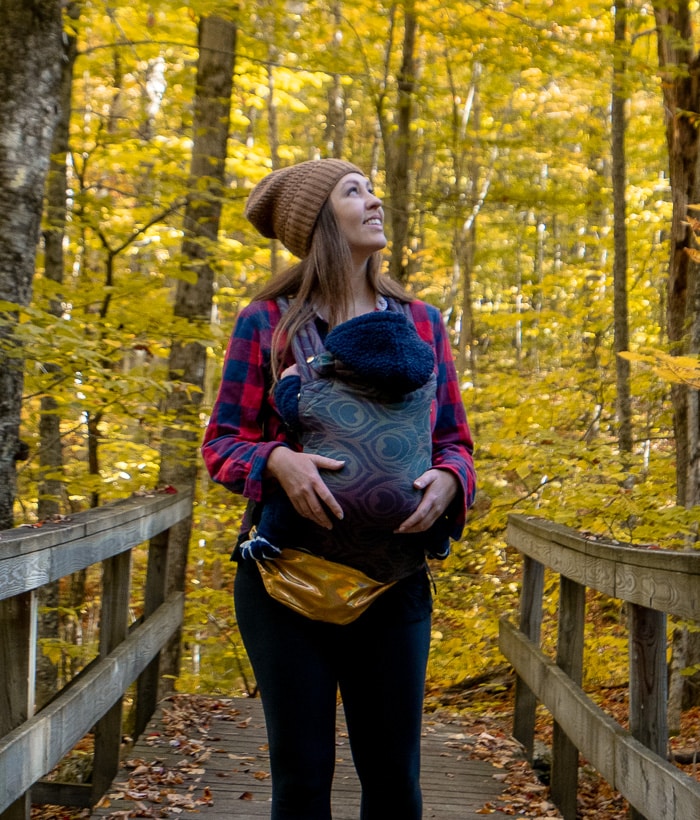
I can’t blame anyone for being tempted to hit the trails ASAP after giving birth. If you’ve always felt better in the outdoors, it might be your happy place. I certainly relate! Still, I did not personally take on a trail with elevation gain until I was two months postpartum. This was after a pretty straightforward, birth, and easy recovery, but I just didn’t feel strong enough until that point.
However, I did take my baby on walks around the neighborhood almost from birth. I would put him in my Solly baby wrap and do about a mile in the mornings. This better prepared me to take on the trails later on.
2. Pick Shorter Trails to Start
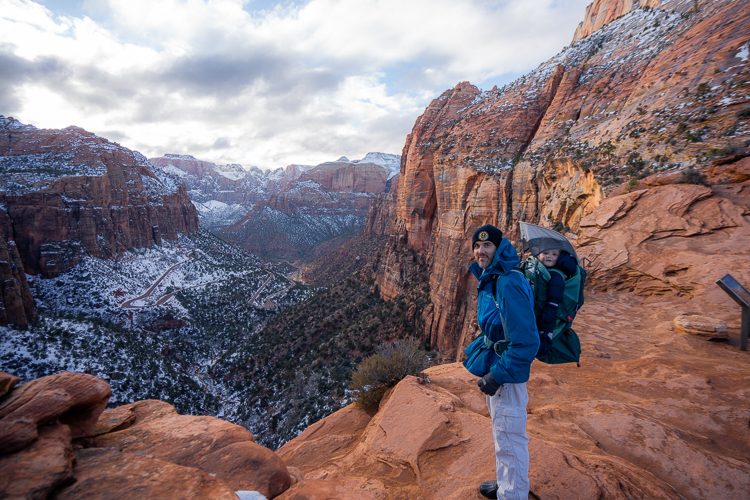
Before giving birth, it wasn’t uncommon for me to go on multi-day treks in the backcountry. I’ve done at least 10 that were a week or longer. Although plenty of people do overnight hikes with their littles, we haven’t pushed it more than 5 miles per hike since he was born nearly a year ago.
Those who go on long hikes with their babies have worked up to its. If this is your goal, start small, get your confidence up, learn what your baby needs, and scale up from there. We started with just a couple of miles, and now we’ve done hikes that took us through snow, over ice, and up to waterfalls, building up our experience before attempting even longer hikes this summer.
3. Get the Right Carrier
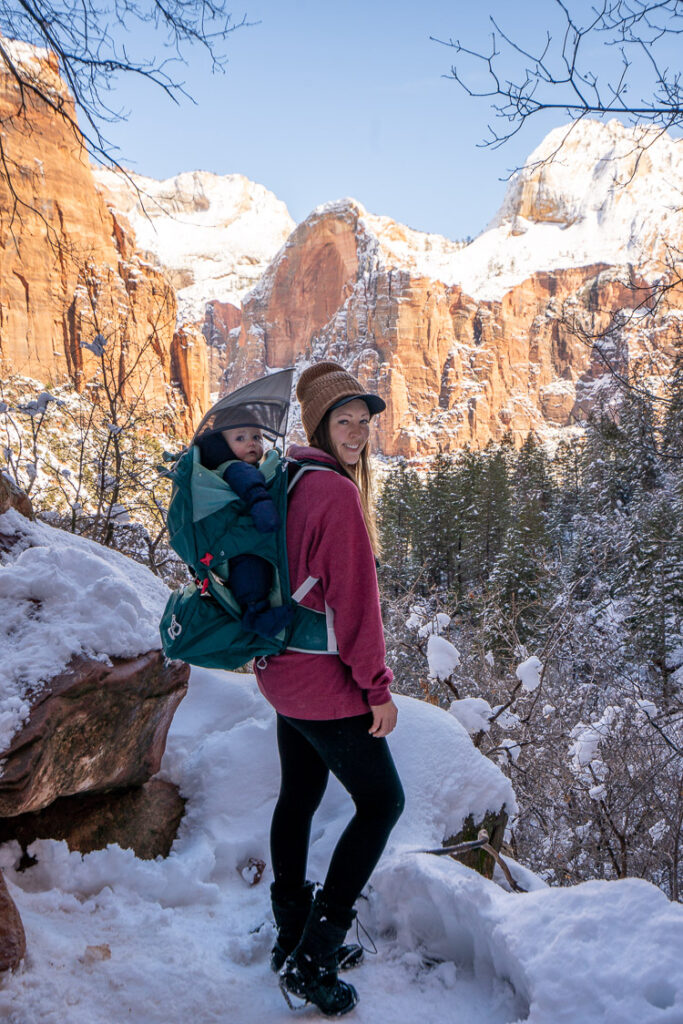
The right carrier is the difference between enjoying your hike, or it being a literal pain in your neck. When my baby was six months, old, we traveled to Japan with him using only an Artipoppe carrier. Although I love this carrier, it was not appropriate for all day every day. He was over 20lbs at that point, and it hurt after a while.
Putting on the Osprey Poco LT in Zion National Park when he was 7 months old was like a breath of fresh air. Like a backpacking backpack, a baby carrier that is designed specifically for hiking is going to have a metal frame, some storage space, a comfortable spot for your baby, and adjustable straps meant to distribute the weight much more evenly across your upper body. It should feel much more comfortable than a standard carrier, though it’s bulkier, too. I’m convinced ours is the best one for the size, which is small enough to fly with, but I love the Deuter Kid Comfort Pro for its baby pillow. Read my Osprey Poco LT review for more.
4. What to Dress Your Baby In
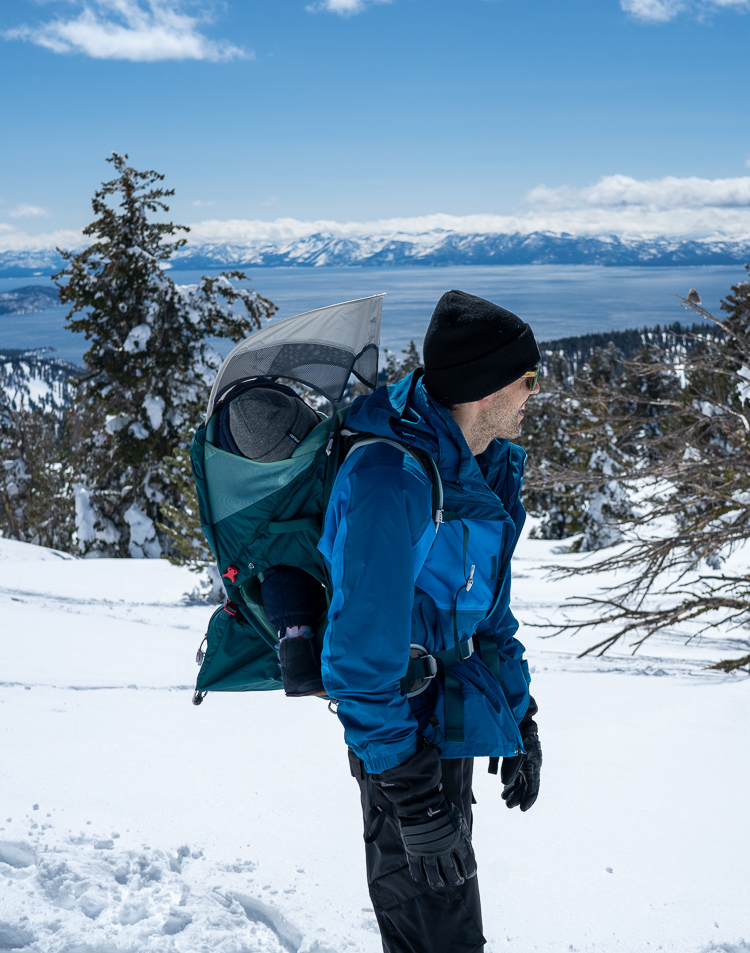
What time of year are you hiking? Remember that regardless of when you go, you’re going to be doing the work, so you’ll feel much warmer than your little one. This is especially important for winter hiking.
We always go for layers. For the base layer, I almost always put our son in a Kyte Baby or other bamboo baby outfit, which helps with body temperature regulation. Next if it’s snowy outside, we put him in his snow suit. If it’s brisk but not freezing, we would put him in a fluffy, warm onesie. I tested many beanies and prefer this brand. If it’s sunny, I prefer just a bamboo onesie and put him in a Patagonia sun hat.
For his feet, we had some warm hand-me-down baby Uggs that were perfect for winter. In the summer a light sock for sun protection is perfect. His little sleepies can also fold over to create one on the go.
5. Changing Diapers on the Trail
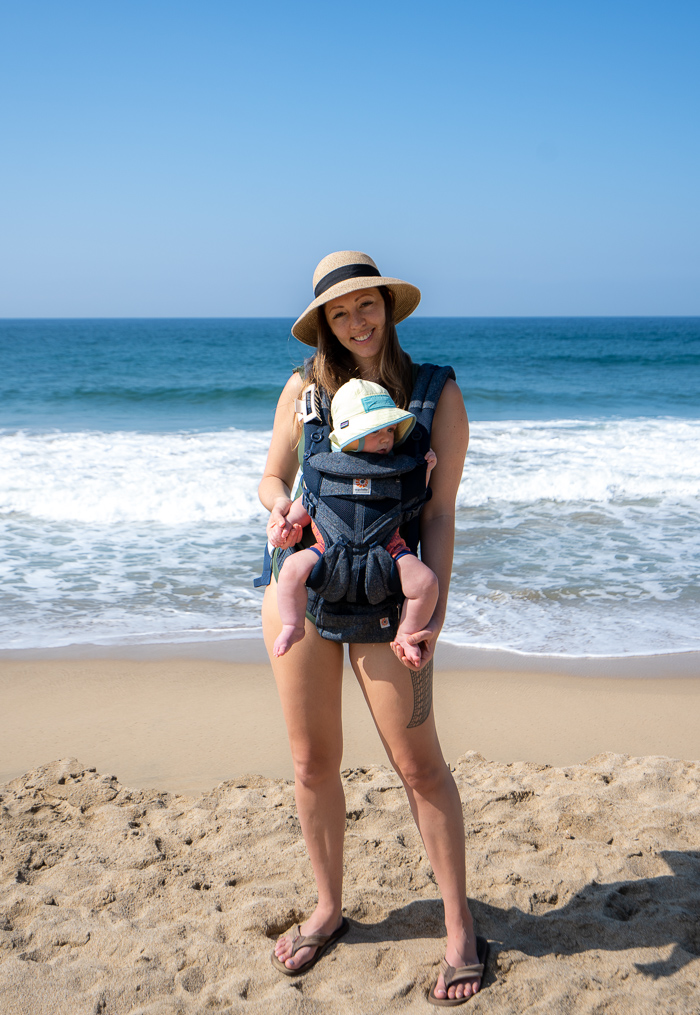
Be prepared for diaper changes on the trail. We didn’t find this complicated – all you need to do is bring your portable changing mat from your diaper bag, put some wipes in a separate container, or bring a mostly empty pack (a full pack will add unnecessary weight), a few diapers, and you’re good to go. If it’s winter, we try to make this a very quick process, laying one of our coats down in the snow before putting the baby on the changing mat.
If you have a dog or a leftover grocery bag, bring some doggy bags or plastic bags along in case you have a messy change. For pee diapers we usually just throw them in the bottom of the Osprey carrier and throw them away when we get to a trash can.
Thankfully, we haven’t changed that many diapers on the trail since we always make changing the diaper the last thing we do before starting the hike, and the first thing we do once back at the car. We also use ultra absorbent diapers for hiking, sleep, and traveling. They have been a game changer. I think we can all agree getting peed on while hiking wouldn’t be fun!
6. Feeding on the Trail
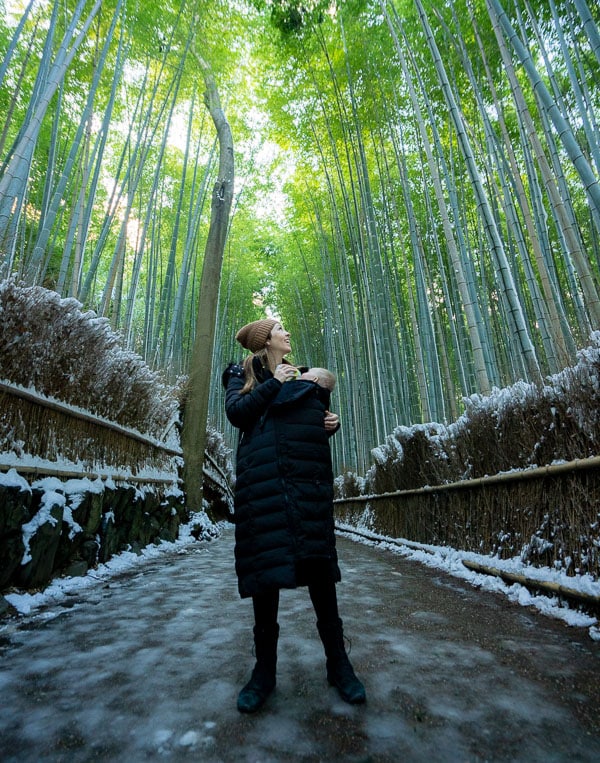
Feeding on the trail doesn’t have to be complicated, either. If you’re nursing or bottle feeding, offer a feed before you start hiking just to make sure that your little one starts the hike with a full stomach. One advantage of using a front baby carrier is you can nurse with the baby in the carrier or in my case, keep walking with a bottle in hand. I did this all the time in Japan.
You can also look for places along the way that look like comfortable places to stop and feed or nurse, like benches, logs, trees with grass, or anything that feels comfortable to you. If you want privacy, consider bringing along a nursing cover. It’s best not to wander off the trail looking for a spot – both for your safety and for the environment.
I have seen moms nursing on the trail and I feel like hikers are the kind of community of people who aren’t going to make you feel awkward for feeding your little one. It’s a natural thing in nature, after all.
If you’re bringing water and formula, it’s best to bring a little more than you’re likely to need. Don’t rely on water sources on the trail, instead bringing your own boiled and sanitized water.
7. Snow and Weather Tips
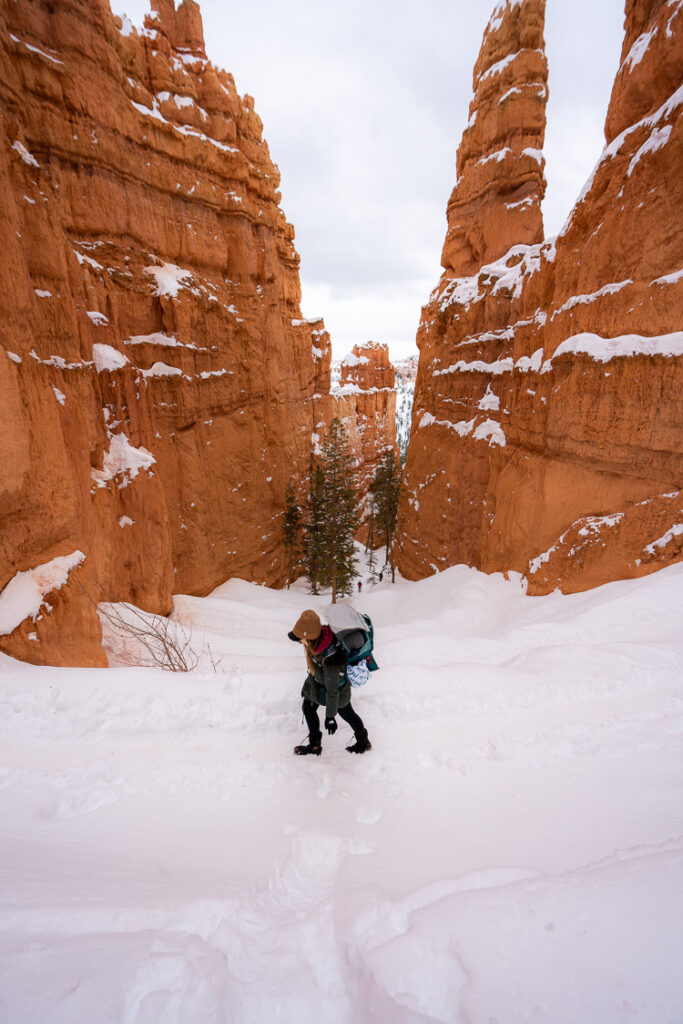
Just because it’s winter doesn’t mean that you can’t hike with your baby. Mine turned six months old in the middle of winter, and we didn’t want to miss out on snowy adventures! Definitely follow my tips above for keeping them warm, but make sure you’re properly outfitted, too.
Trails can turn slick in the winter, and we found microspikes to be a must for our winter hikes, assuming the snow wasn’t so deep it warranted snow shoes instead. We have our own, but in case you don’t, REI (in the states) rents them out. In that case, go for snow shoes. It’s important to stay upright and not risk slipping, which could hurt you both!
In the summer, make sure they’re adequately covered by the sun shade in addition to their hat. Bring baby-friendly sunscreen along, and if possible, have their arms and legs covered by a light, breathable outfit. We also keep sunglasses on our baby when it’s bright out, which have to be held in place by a strap. It’s normal for them to pull them off repeatedly in the beginning, but hopefully with some gentle persistence, they will get used to them.
If it’s pouring rain, we tend to avoid hikes, but if you get caught, Ergobaby makes this cover for their carriers that people seem to love!
8. What if They Freak Out Miles In?
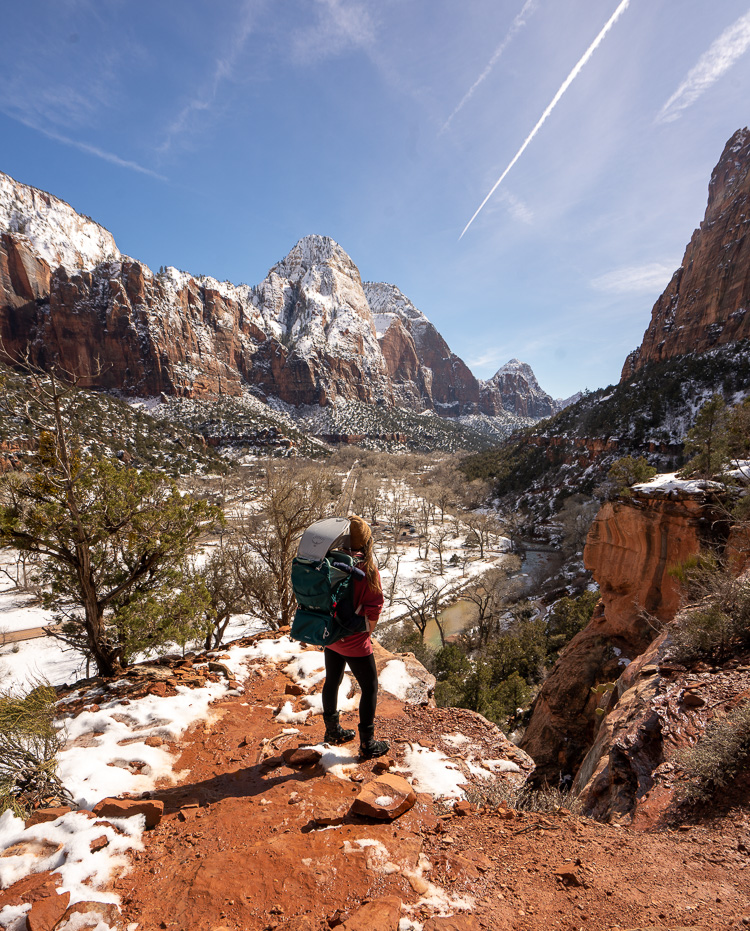
This was one of my biggest concerns – what if your baby starts to throw a fit when you are already miles down the trail? What do you do? This actually happened to us on the last mile of a 4 mile hike in Utah (not pictured above since we were booking it to the end!).
We stopped to make sure that he didn’t need a diaper change and wasn’t hungry. Thankfully our baby — and most others — will fall asleep pretty easily in a baby carrier, so it wasn’t because he was tired. When nothing worked, I basically just had to strap a crying baby on and finish the hike. It happens! The reality was the wind had picked up and it was snowy outside, so it just wasn’t comfortable for him anymore.
9. Hiking with a Stroller
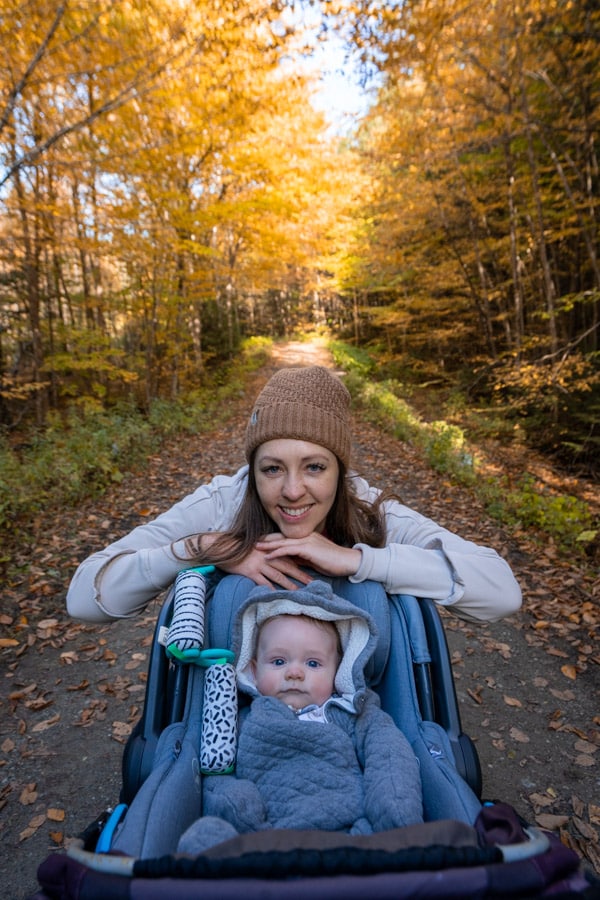
What if it is a paved trail or a well-maintained dirt trail that is flat enough to use a stroller? In that case, we push instead! It’s easier on our backs and gives him even more room. Plus, we can recline it if he wants to sleep.
We used a BOB pictured above with his car seat when visiting some friends and using their gear, but I prefer the Guava Roam Crossover all-terrain stroller. It’s our go-to for home and travels as it folds up much smaller than a BOB, and handles super nicely.
10. How to Travel with Baby Hiking Gear
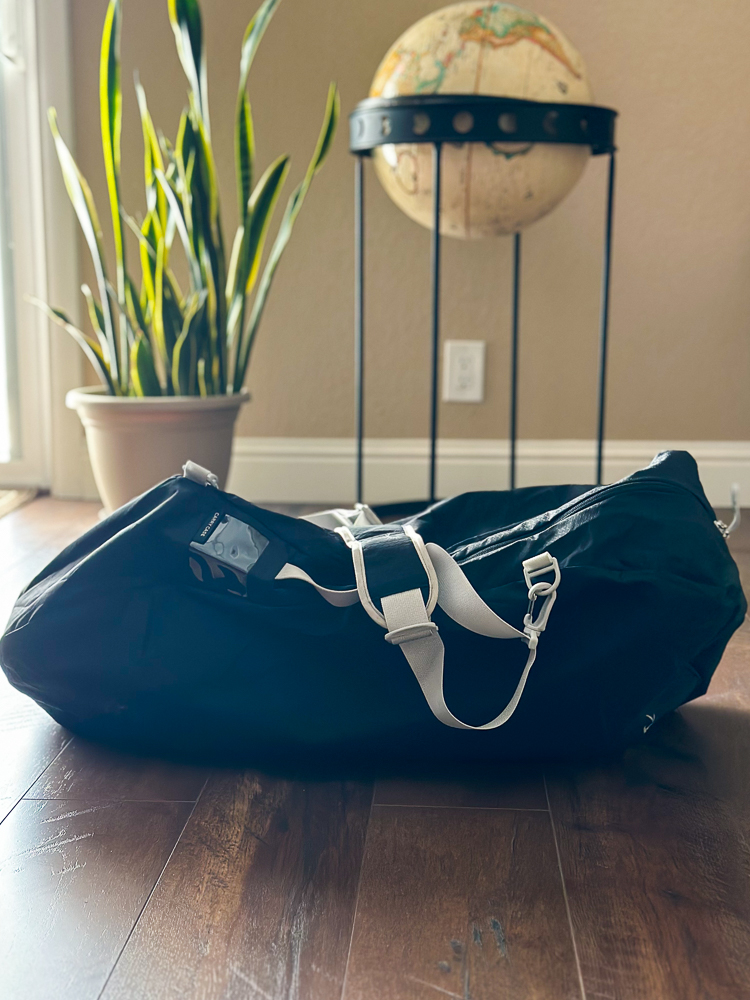
We all know that traveling with baby gear can take up a lot of room. Bringing along carriers is yet another thing to add to the bag.
The Osprey Poco LT is just barely short enough for us to fit into the largest standard size suitcase. This is a big reason why I wouldn’t go any bigger – we fly with it too often. You can also purchase the carrying case, which isn’t strong enough to risk checking it as luggage, but would work well as a carry-on.
I’ve been glad to find that hiking with a baby doesn’t have to be difficult. Our baby LOVES being outside, seeing nature from up above, and taking in the surroundings. He would live outside if he could, which is why it’s been such a gift to take him hiking. If you’ve been afraid to try, just start small, get a baby carrier that is comfortable, and go for it!



